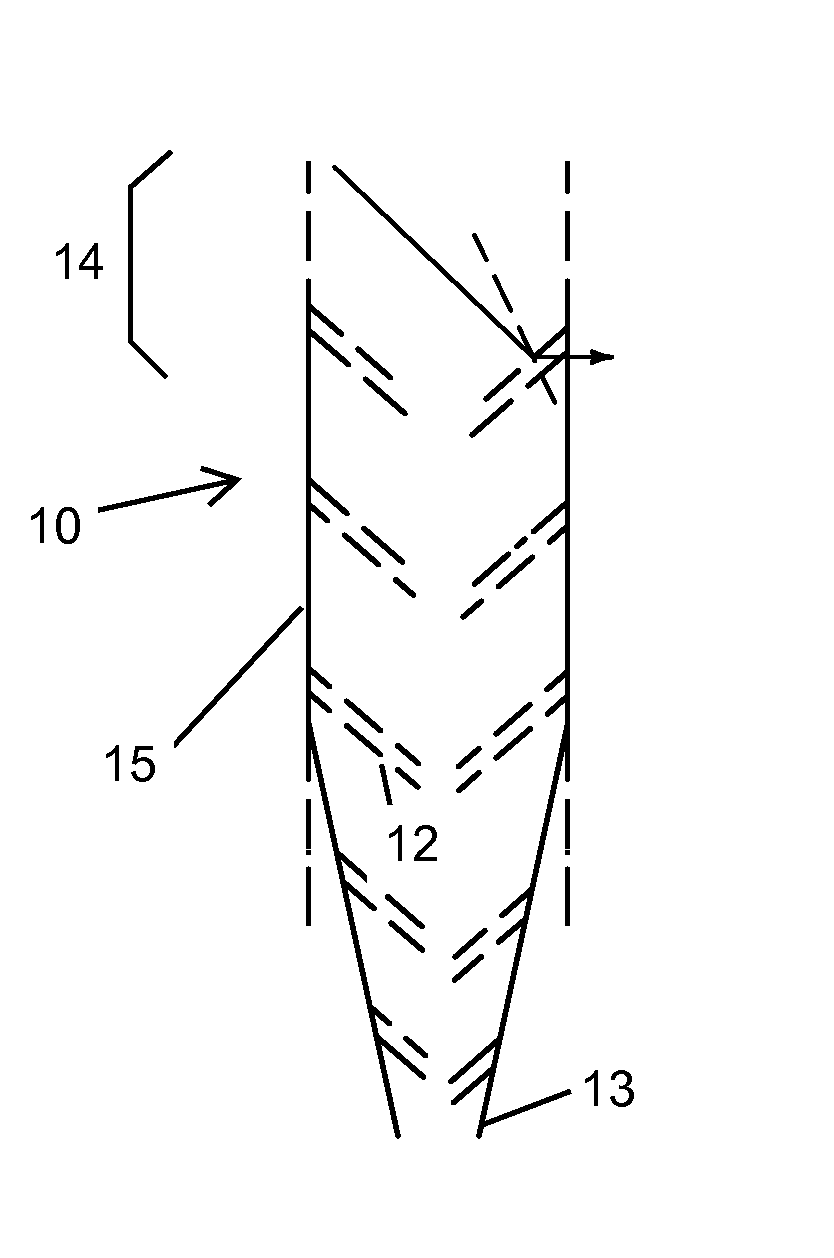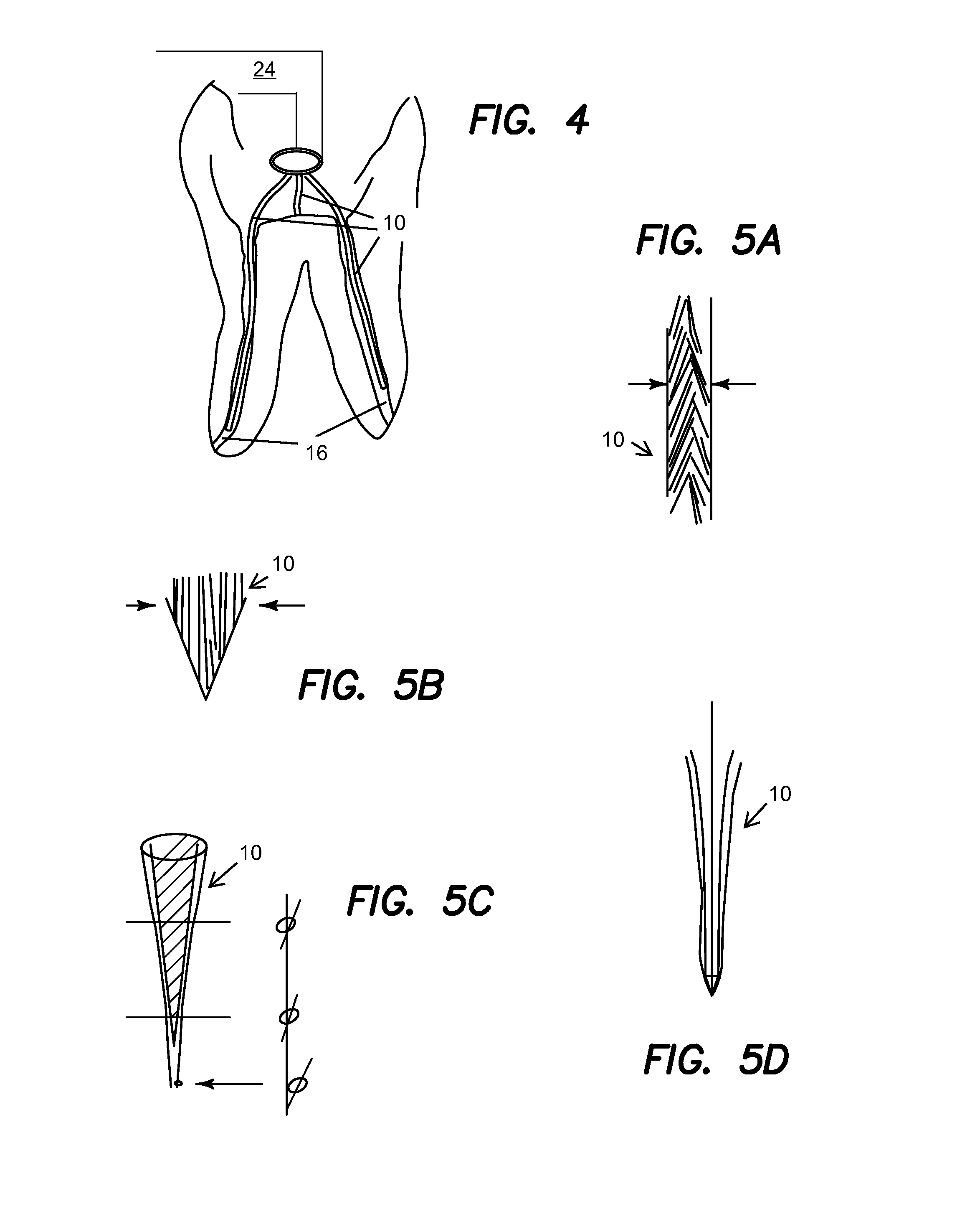Fluid controllable laser endodontic cleaning and disinfecting system
a technology of which is applied in the field of electromagnetically controlled laser endodontic cleaning and disinfection system, can solve the problems of inadequate bacteria control, causative agent in pulpal and periapical pathosis, and the prior art has not been completely ineffective, and achieves improved root canal wall coverage, improved root canal penetration probability, and improved absorption
- Summary
- Abstract
- Description
- Claims
- Application Information
AI Technical Summary
Benefits of technology
Problems solved by technology
Method used
Image
Examples
Embodiment Construction
[0023]Reference is made to Prov. App. 60 / 961,113, which contains an article entitled The antimicrobial efficacy of the erbium, chromium:yttrium-scandium-gallium-garnet laser with radial emitting tips on root canal dentin walls infected with Enterococcus faecalis. The devices and methods disclosed and referenced herein are intended to relate to and build upon devices and methods disclosed, and referenced, in that article, in part or in whole, in any combination or permutation, with or without modification, as would be understood by one skilled in the art to be possible in view of this disclosure to be feasible or modifiable to be feasible.
[0024]Reference will now be made in detail to the presently preferred embodiments of the invention, examples of which are illustrated in the accompanying drawings. Wherever possible, the same or similar reference numbers are used in the drawings and the description to refer to the same or like parts. It should be noted that the drawings are in simpl...
PUM
 Login to View More
Login to View More Abstract
Description
Claims
Application Information
 Login to View More
Login to View More - R&D
- Intellectual Property
- Life Sciences
- Materials
- Tech Scout
- Unparalleled Data Quality
- Higher Quality Content
- 60% Fewer Hallucinations
Browse by: Latest US Patents, China's latest patents, Technical Efficacy Thesaurus, Application Domain, Technology Topic, Popular Technical Reports.
© 2025 PatSnap. All rights reserved.Legal|Privacy policy|Modern Slavery Act Transparency Statement|Sitemap|About US| Contact US: help@patsnap.com



